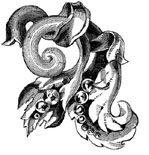
The Duality of Covenant Authority in the Catholic Church
THE GENESIS OF HUMAN SEXUAL COMPLEMENTARITY
In the wake of the feminist revolution, the world’s attention turned to the longstanding needs of women, such as equal access to educational services, comprehensive health coverage, charitable assistance for girls with special needs, care for at-risk women, and sensitivity to young women at universities and centers of higher education. Who authored this particular list? None other than Pope St. John Paul II (Letter to Mary Ann Glendon and the Holy See’s Delegation to the Fourth World Conference on Women, 1995). It is only right that the Supreme Pontiff of the Catholic Church, which, through the ages, has led the way in promoting respect for women, should be on the forefront of this movement. The Church must do so if she is to remain faithful to her Founder, whose sensitivity toward women elevated them from their historic roles as “usable” objects of “pleasure” to “lovable” persons “worthy of respect.”
While sociologists were busily gathering statistics and mapping out the latest trends, the Holy Father, in the late 1980s, guided the world back to the Book of Genesis, connecting theology to human sexuality. In doing so, he reaffirmed the goodness of masculinity and femininity while reminding an often dismissive world that the gift of sexuality is both a constitutive part of being human and a sacred reminder of God’s own life.
Reading Genesis 1:1-24 is like browsing an instruction manual. These passages have masculine characteristics: They narrate the creative power of God through distinctions made in the original chaos. We read of light and darkness, sea and dry land, day and night, and fish of the sea and birds of the air. We watch as an ordered assembly files before man and he, leading the congress, identifies the distinguishing character of each creature. Logic, the masculine forte, systematizes a world of differences as man’s deductive reasoning organizes the levels of nature. Is this not reminiscent of a young lad taking a pile of Legos and building a system or structure that will fulfill a particular purpose?
Little girls more often give their attention to dolls, not building blocks. Women of all ages are relational creatures. Thus, the second creation account (cf. Gen. 2:4-15) appears as a feminine rendering that complements the first account. It has notable emphasis on personhood. The loneliness of Adam’s original solitude evaporates in one love-cry as he perceives his own identity through the completion and individuality of Eve: “This at last is bone of my bones and flesh of my flesh; she shall be called Woman” (Gen. 2:24).
You May Also Enjoy
He had a great love for women and was neither a feminist nor a misogynist. For him, a woman is good as a woman, not just when she tries to impersonate a man.
While some religious phenomena and some paranormal phenomena share some of the same qualities, that does not mean they are all the same thing.
Peter was almost certainly looking over the shoulder of Mark during the writing of the second Gospel, and Jesus’ own mother had enormous influence on Luke.

